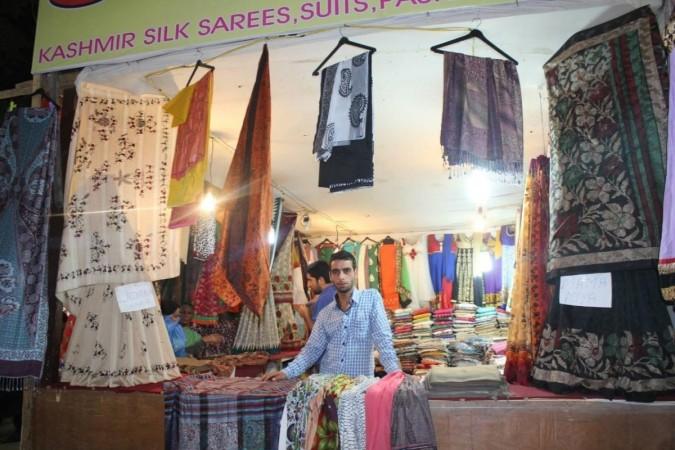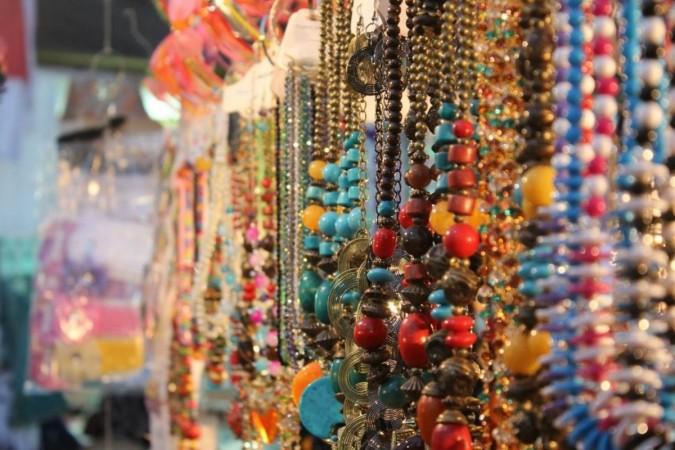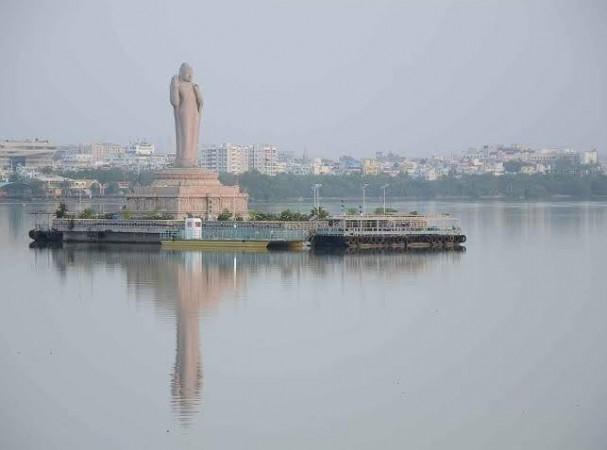The stage is set for 82nd All India Industrial Exhibition, the popular annual trade fair, in Hyderabad.
Numaish, as one of the world's oldest annual consumer exhibitions is popularly known, will get off to a colourful start with the New Year.
As many as 2,400 stalls have been set up on the sprawling Numaish Maidan at Nampally in the heart of the city for the annual 45-day-long exhibition.
In view of the problems faced during the last two years, the exhibition society has made elaborate arrangements for the traders and visitors.
All India Industrial Exhibition Society secretary Aditya Margam hoped that this year's edition will help traders overcome the losses they faced for the last two years due to various reasons.
The organisers have allotted stalls to traders and various business organisations from different parts of the country to sell their products at the fair.

Every day the exhibition will be open for visitors from 3.30 p.m. to 10.30 p.m.
The organisers have hiked the entry fee from Rs.30 to Rs.40 per head.
They said free Wi-Fi will be made available across the grounds. The society has tied up with BSNL to provide the facility for communication and business activity.
Traders had complained last week that financial transactions electronic mode were affected in the absence of Wi-Fi.
In view of the major fire that broke out in 2019, the organisers have provided an underground firefighting system by laying 2.8 km long water pipeline linking it to two sumps with a capacity of 1.50 lakh litres each.
The exhibition could not be held in 2020 due to Covid-19 situation. This was only the third time in its history that it could not be held.
Last year, the Numaish was suspended a day after it was inaugurated by the state Governor in view of the curbs imposed by the government to check the spread of Covid-19. It was later organised from February 25.

The All India Industrial Exhibition Society (AIIES), which has been organising the fair for 80 years, had put in place various measures to adhere to Covid-19 safety rules like compulsory wearing of masks, maintaining social distance, and vaccination of all stall owners.
This year too, there was an air of uncertainty till the last minute due to the surge in Covid-19 cases in other countries and the precautionary measures taken in India. However, the state government allowed the event to be conducted as scheduled.
Numaish-e-Masnuaat-e-Mulki, or Numaish in short, made a humble beginning in 1938 as an event to promote locally produced goods.
The seventh Nizam of Hyderabad State, Mir Osman Ali Khan, inaugurated the first 'numaish'.
Enthused by the good response, it was decided to make it an annual event and use the earnings to promote education.
Beginning with just 50 stalls and a capital of Rs.2.50, it has today evolved into one of the biggest industrial exhibitions in the country.
It was a group of graduates from Osmania University who came up with the idea of an exhibition to conduct an economic survey of the state.
Numaish could not be organised in 1947 and 1948 due to the turmoil in the aftermath of India's Independence. With Hyderabad acceding to the Indian Union, the event bounced back in 1949.
From amusement rides to shopping with good bargains and a variety of lip-smacking food, the annual event offers loads of fun and frolic.
In its 82nd year, it is considered the mother of all carnivals -- and an integral part of Hyderabad's rich culture.

It draws people not just from the twin cities of Hyderabad and Secunderabad but from other parts of Telangana and even neighbouring states.
The fair begins on January 1 every year and continues for 45 days. Traders from various parts of the country set up their stalls during the exhibition, which is visited by 45,000 people every day. Over 20 lakh visitors had visited the exhibition in 2019.
A unique blend of economy and culture, the event is organised on the sprawling grounds and revenues from the fair are spent on a group of educational and charitable institutions run by the Society.
(WIth inputs from IANS)









